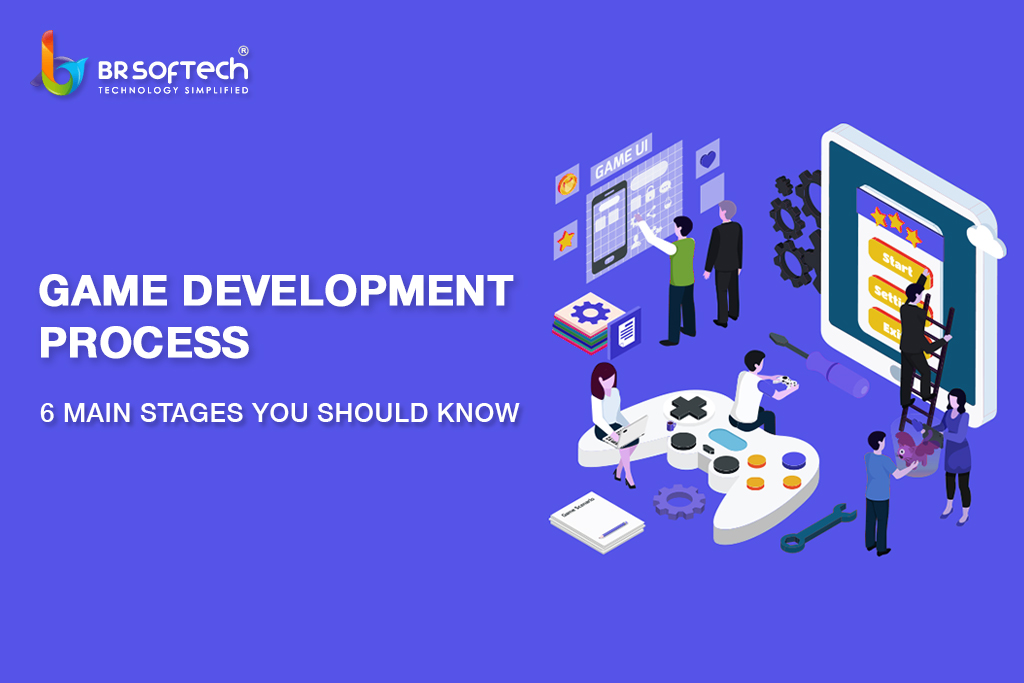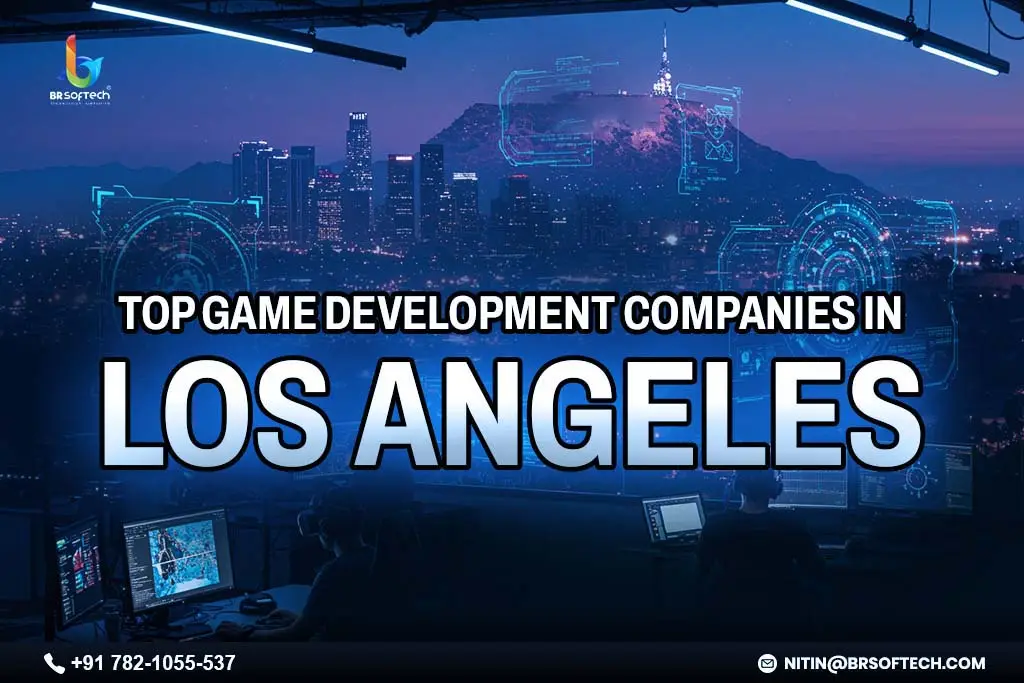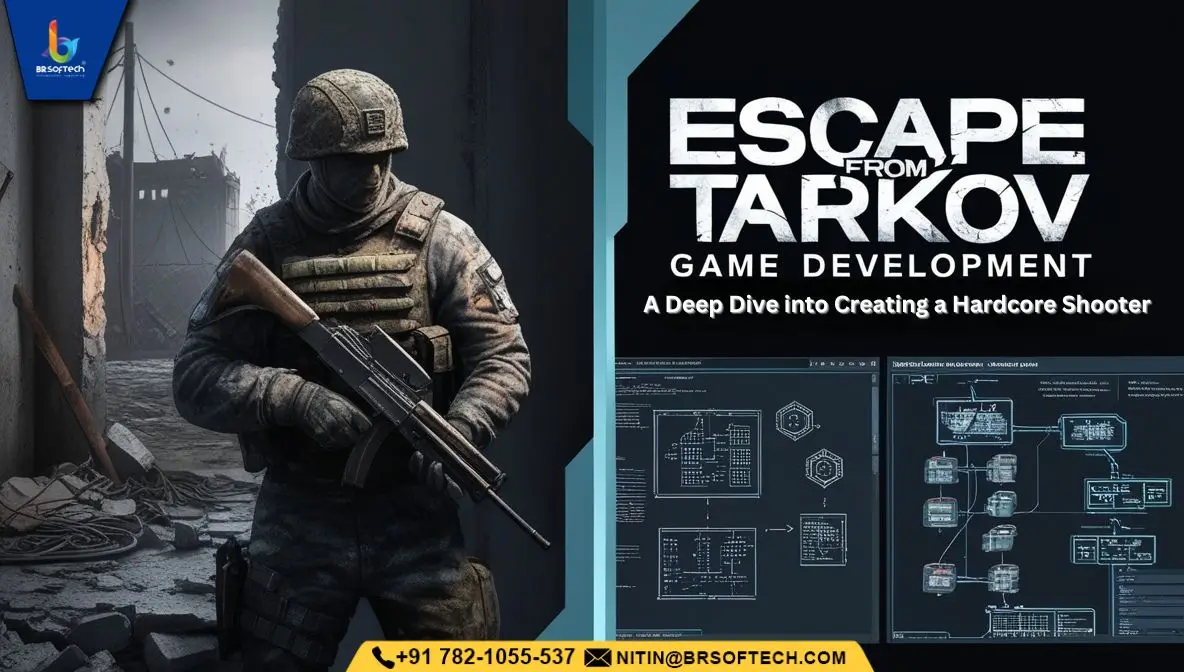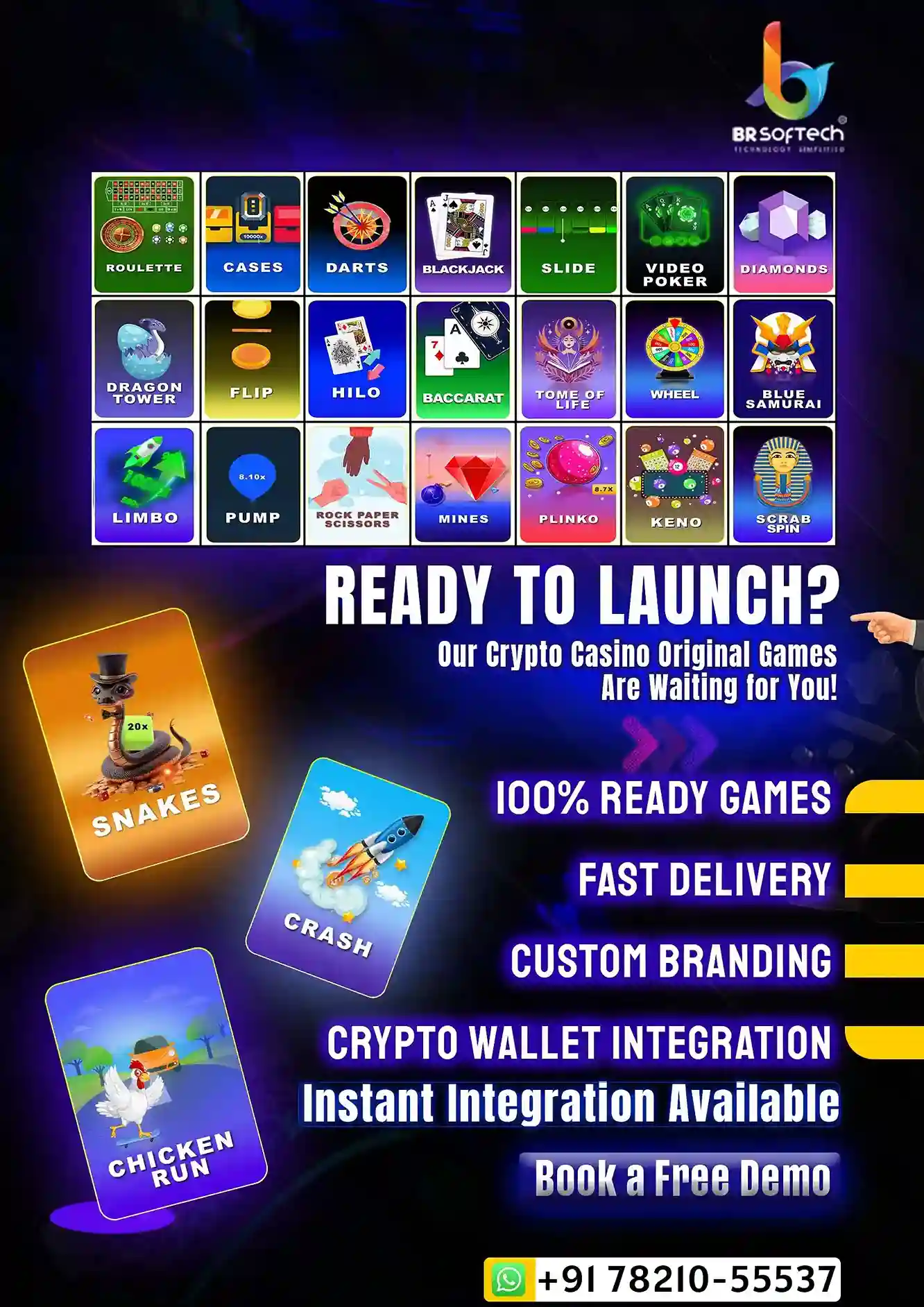Developing a successful game can be seamless with the right knowledge of the game development process. Given the popularity of video games, the industry is bound to reap incredible profits. Many budding entrepreneurs are investing in game building because of its lucrative nature. However, before investing in online video games, you must be aware of the multiple stages of game creation.
According to the sources, the gaming market is projected to reach USD 535.3 billion by 2033, with a compound annual growth rate (CAGR) of 8.3% (Source).
This blog will guide you through the whole game development process, helping you understand the challenges and hidden steps of this process.
What is The Game Development Pipeline?
Game developers stick to a structured pipeline throughout the game development process, which helps them streamline the process. It is similar to the production line in industries. The game development pipeline helps to decide the flow of work and helps different departments decide what work they need to do.
In game production, a pipeline is a process to produce features and assets that go into the game. The game design document is the first game development stage. You need to define the flow to develop a smooth and lag-free game.
A game development pipeline is a complete set of instructions that simplifies the game curation process. As you progress in this blog, you will have a rough idea and visualization of what the game design workflow would look like.
6 Major Stages of the Game Development Process
A game development process involves a myriad of people. A complete team that is hardworking, dedicated to their work, and experienced comes together to build the game.
Here are the six stages:
1. Idea Generation
Every innovation begins with an idea, the same thing happens in game creation. It begins with entrepreneurs sharing their ideas with a team of developers. How the game will look, what the characters will be, and its difficulty level are some of the points of discussion. This step includes concept design, a rough sketch of the game, and more.
This stage is mainly responsible for sorting out some of the major questions before you begin the hardcore development process. These questions are:
- Would it be a 2D or 3D game?
- What are the important characters?
- What additions will make the users love the game?
- What is the USP of the game?
- How is it different from its competitors?
2. Market Research
Market research comes next in the six crucial stages. This step includes detailed research about the market and its demographics. For example, observe the latest trendy games and how your game would add value to the current trend.
You should also keep an eye on your competitors. Look for the gaps in their marketing and see if it’s a cross-platform game or not.
3. Finalizing a Development Company
Choosing the right game development company can save you a lot of time and money. The time and money you save can be used in marketing or the game, which is highly beneficial for a newly-launched game. There are certain steps to take when choosing the right company.
- Evaluate the Portfolio
- Check Client Reviews and Testimonials
- Assess Technical Expertise
With the help of the above-mentioned parameters, you can easily differentiate a good company from an average company.
4. UI/UX
UI/UX plays a significant role in forming the first impression in a user’s eyes. Every game with a good UI fascinates a player just by its looks. In this process, the UI/UX team completes the graphics design part and ensures that the game runs smoothly, the game is interactive, and a player understands the game.
5. Testing and Q/A
After the development process comes the penultimate and one of the most important parts of stages, i.e., testing and QA. Testing is a lengthy process where bugs and loopholes are spotted in the gameplay. A team of skilled testers plays the game and finds the bugs; later, the irrelevancies are flagged, and developers work on them. Testing includes:
- Going through the gameplay repeatedly
- Learning the loopholes of the game
- Testing all the features of the game
- Flagging the bugs to the development team
6. Launch and Marketing
You are only halfway once you are done with the development stages of the game. Post that comes deployment of the game, once the game gets a green light from the testing and QA stage. The launch of the game is a crucial time for the investors. The marketing team strategizes the different marketing campaigns to attract users and create a brand image. The Launch and Marketing stage includes:
- Selecting an appropriate time for the launch
- Takes care of all the advertising and PR processes
- Helps in driving the sales of the game, both offline and online
- Running multiple marketing campaigns
People Who Make Game Development a Successful Task
Every game or business needs a talented team with good coordination. We suggest that you hire a team consisting of members who will be responsible for streamlining your development stages.
Project Manager
The project manager is responsible for managing the overall team. He/she looks after the project, ensuring the stages are completed smoothly. Additionally, he/she is responsible for assigning job responsibilities to different team members.
Game Developers/Programmers
Probably the backbone of game building, programmers are the heroes behind the game mechanics that you experience in a game. Game developers are tasked with creating a secure and bug-free game that works smoothly on all platforms. They actively collaborate with game designers and artists to develop a well-optimized and aesthetically pleasing game.
Game Artists
One of the criteria for gamers to judge a game is through its visuals. As the name suggests, the game artist’s job is to bring life to the game. They are responsible for creating bespoke visual effects, attracting characters, applying textures, adding lighting and shading, and more.
Also Read: How to Choose The Best Video Game Art Styles?
Game Designers
A game designer is responsible for designing the aesthetics of the game. The core game mechanics, rules system, and overall gameplay are some of the areas that game designers work on. It includes characters, difficulty levels of the game, story, and more. All these elements are essential to a successful game.
Sound Designers
Sound is the most underrated element of game development that arguably affects the most on the emotional side of the player. Sound brings out the different emotions in a game. Sound designers effectively engineer the creation and integration of captivating sound effects at various moments in the game environment.
Quality Assurance (QA) Testers
They are responsible for ensuring that the game functions at its utmost capacity. They test the prototype in every aspect and apply alpha and beta testing to ensure a bug and glitch-free game.
Writers/Narrative Designers
Writers and narrative designers create the storyline and plot for the different stages of the game. They ensure that the game is interactive and engaging by creating a compelling story that aligns with the player’s interests.
Level Designers
Level designers curate multiple levels in the game, which you complete one by one. Incorporate challenges to level up and offer rewards to maintain player satisfaction.
User Experience (UX) Designers
The role of user experience (UX) designers is to ensure that players get the best experience while they engage in the game. They create a user interface that provides players with an interactive and enjoyable experience.
Essential Tools for the Game Design and Development Process
The game development industry, which has outplayed many industries, has become one of the most lucrative industries. Almost every other technology gets incorporated with games, be it blockchain, AI, VR, or Mixed Reality.
The days are gone when gamers struggled with low graphics and slow processing systems. Due to advancements in technology, people are now looking forward to gaming setups and environments to enjoy hardcore gaming. The stages of game development involve many crucial and critical processes. Gaming has become a mode of entertainment for people, besides social media and cinema.
Game Engines:
Unity 6
Best known for developing cross-platform games, this is one of the latest game engines to create engaging and interactive games. The engine was released in October 2024 and offers enhanced features, which include tools for mobile web targeting, and promises long-term support for ongoing enhancements and stability.
Unreal Engine 5
Unreal Engine is known for its contributions to the AAA game development industry. This game engine is an improved version of its previous version, Unreal Engine 4. This offers robust tools for both 2D and 3D game creation. Unreal Engine 5 supports advanced graphics, which makes it a preferred option for AAA game developers.
Also Read: Unity or Unreal Engine: Which One is the Best?
GameMaker 11.0
Released in November of 2024, the game engine improves the development experience by offering various stability improvements and bug-fixing solutions.
Godot
This engine works perfectly for 2D and 3D games, and it comes with an extensive array of commonly used elements and tools.
Programming languages:
The game mechanics, characters, and NFT creation are all done through coding. Developers write code using a programming language. It has a big use in the gaming industry
Java and C++ are two of the most popular programming languages that come in handy while developing a game. Most popular games in the world, like Angry Birds, are created using Java.
Art and design:
Photoshop
Unarguably, the most widely used software for art and design across industries. Furthermore, the most famous software when it comes to digital art creation is in game development.
GIMP
GIMP is one of a lighter alternatives to Photoshop. If you are handling a small business and cannot afford Photoshop’s premium subscriptions, you can resort to GIMP plans, which are significantly cheaper.
Blender
Blender is a 3D computer graphics software, a tool that has been used in the past to create a plethora of games.
Also Read: Maya vs. Blender: Which One is Best for Your Next Project?
Game Development Trends in 2025
The game development sector has seen many trends in recent years. Some of the trends can be related to the incorporation of technologies into the game to make it more interactive. Let’s discuss some of them:
One of the current trends in the gaming landscape is the use of virtual and augmented reality in games. These technologies bring a highly stimulating gaming experience with innovative gameplay mechanics.
Moreover, Progressive Level Generation through AI is the new norm, where each level feels new, and players feel more associated with the gameplay. The cloud gaming ecosystem will grow significantly, making online streaming extremely convenient.
These are some of the ongoing trends that are happening in 2025. At BR Softech, we use the latest trends and technologies to develop a game that stands apart.
Final Words
Just like any big project, a perfect game has to go through many stages. Market research, selecting the right game development company, and deciding on the correct platform to launch your game are some of the stages included. An entrepreneur can have a great idea, but converting it into a real-life gaming environment needs the right developer’s efforts and tools.
If you are an entrepreneur and want to develop your game, then you can contact BR Softech, a top-notch agency that has been working in the gaming landscape for the past 13 years.
Frequently Asked Questions(FAQ)
Q1. How do I know if my game idea is marketable? Ans. You can use the following tools to validate your idea and know if your game is marketable or not: Surveys, Focus groups, Industry reports.
Q2. How long does it take to develop a game? Ans. The development process of the game depends on its features and complexity. The more the game is loaded with features, the longer it will take. Simple games like hypercasual can be developed within 2-6 months. And when it comes to the metaverse games, it takes around 1 to 2 years to get developed.
Q3. Should I build an in-house team or outsource development? Ans. This depends on your resources and expertise. Both have their own pros and cons. In-house development offers more control, but outsourcing can provide access to specialized skills and reduce costs. Evaluate your project’s scope and budget before deciding.
Q4. How do I select the right development company for outsourcing? Ans. You can check the portfolio of the company, its previous projects, its reputation in the gaming industry, and how long the company has been serving its clients. Other factors include: The tech stack they use, How well-versed are their developers, The reviews online.
5. How much does it cost to develop a game? Ans. The cost of developing a game varies depending on the kind of game. 2D games may cost you below $5000. A more extensive game in terms of graphics costs between $10,000 and $50,000. However, the AAA games cost more than $50 million. Many factors influence the cost; some of them are mentioned below: Game Niche, Location of the Developer, The Technology Stack Used, Cross-platform Compatibility










